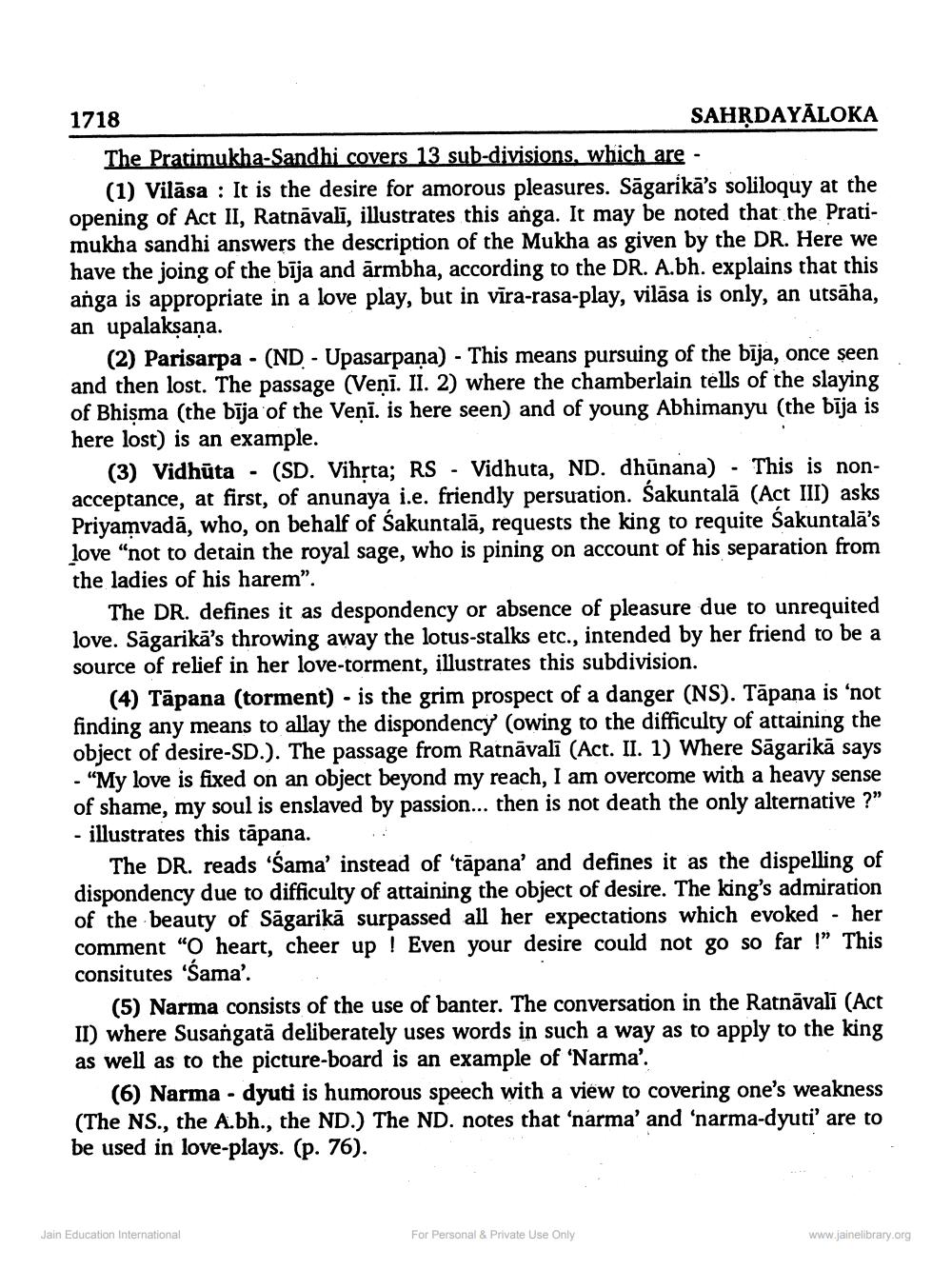________________
1718
SAHĶDAYĀLOKA The Pratimukha-Sandhi covers 13 sub-divisions, which are -
(1) Vilāsa : It is the desire for amorous pleasures. Sāgarikā's soliloquy at the opening of Act II, Ratnāvalī, illustrates this anga. It may be noted that the Pratimukha sandhi answers the description of the Mukha as given by the DR. Here we have the joing of the bīja and armbha, according to the DR. A.bh. explains that this anga is appropriate in a love play, but in vīra-rasa-play, vilāsa is only, an utsäha, an upalaksana.
(2) Parisarpa - (ND - Upasarpana) - This means pursuing of the bija, once seen and then lost. The passage (Veni. II. 2) where the chamberlain tells of the slaying of Bhisma (the bīja of the Veni. is here seen) and of young Abhimanyu (the bīja is here lost) is an example.
(3) Vidhūta - (SD. Vihịta; RS - Vidhuta, ND. dhūnana) - This is nonacceptance, at first, of anunaya i.e. friendly persuation. Sakuntalā (Act III) asks Priyamvadā, who, on behalf of Sakuntalā, requests the king to requite Sakuntalā's love "not to detain the royal sage, who is pining on account of his separation from the ladies of his harem”.
The DR. defines it as despondency or absence of pleasure due to unrequited love. Sāgarikā's throwing away the lotus-stalks etc., intended by her friend to be a source of relief in her love-torment, illustrates this subdivision.
(4) Tāpana (torment) - is the grim prospect of a danger (NS). Tāpana is ‘not finding any means to allay the dispondency (owing to the difficulty of attaining the object of desire-SD.). The passage from Ratnāvali (Act. II. 1) Where Sagarikā says - "My love is fixed on an object beyond my reach, I am overcome with a heavy sense of shame, my soul is enslaved by passion... then is not death the only alternative ?" - illustrates this tāpana. ..
The DR. reads 'Sama' instead of 'tāpana' and defines it as the dispelling of dispondency due to difficulty of attaining the object of desire. The king's admiration of the beauty of Sāgarikā surpassed all her expectations which evoked - her comment "O heart, cheer up ! Even your desire could not go so far !” This consitutes 'Sama'.
(5) Narma consists of the use of banter. The conversation in the Ratnávali (Act II) where Susangată deliberately uses words in such a way as to apply to the king as well as to the picture-board is an example of 'Narma'.
(6) Narma - dyuti is humorous speech with a view to covering one's weakness (The NS., the A.bh., the ND.) The ND. notes that 'narma' and 'narma-dyuti' are to be used in love-plays. (p. 76).
Jain Education International
For Personal & Private Use Only
www.jainelibrary.org




